Why do some people bounce back from disappointment and failure while others take on and store up the negativity from set-backs and get crushed beneath their weight? What makes up resilience?
- Brooks and Grayson both get cut from the team. Grayson accepts that he is not a good player and gives up baseball, but Brooks doubles down and plays harder, convinced that his next tryout will be more successful.
- Terry and Jack’s performance was a disappointment, and their report was judged a failure. Jack sees the painful feedback as a needed lesson, determined to improve the next time. Terry decides that in the future she will not attempt a project so complex and high-profile.
- John and Chris’s ten year relationship has come to a bitter end. John is convinced that if this relationship could not work, then love and companionship are simply not in his future. Chris, however, believes that the painful lessons of this relationship will help make future relationships more fulfilling.
From the board room to the classroom and from the playground to the battlefield, we all seem to be yearning for a formula for resilience. How do we spot it, hire it, measure it, develop and teach it?
Emotional Intelligence are those skills and behaviors that allow you to know, motivate and manage yourself and your own emotions and reactions while also relate to, interact with and motivate others. Having a high EQ means you tend to bring a variety of effective behaviors and skills together in your dealings with the world around you. If you are emotionally intelligent, you tend to bring both self-awareness and interpersonal sensitivity to life’s problems, stressors and set-backs—and by so-doing, bounce back from disappointment.
So the key to resilience is EQ
MHS’s EQ-i2.0 model details 15 components of Emotional Intelligence, and while each one of these elements plays a role in our resilience, there are sevent of these elements that stand out as key to our ability to endure and recover from set-backs.
Interpersonal Relationships: 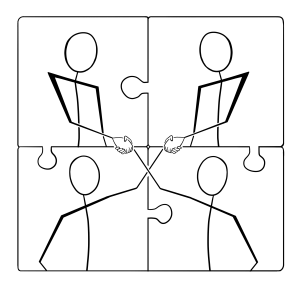
Research is clear that resilient people have a network of relationships (perhaps including, but certainly extending beyond family) with people from whom they will accept support and care when needed. Energy spent on Interpersonal Relationships (within the EQ-i model) develops trust and compassion with people–building and nurturing these critical human support systems.
Social Responsibility:
Social Responsibility is the degree to which you can and do step outside of your own needs to act with a social consciousness–doing what is best for others or the group as a whole. Resilient people often find strength and buoyancy by working toward the good of others or by supporting an effort or cause outside of themselves.
Flexibility:
The ability to take in new data and change your mind–that is the bottom line of Flexibility, and this is the core requirement of a resilient person. 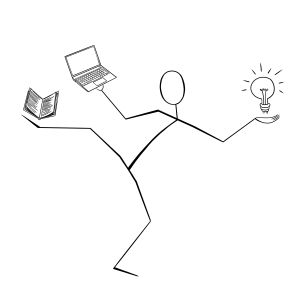 Flexibility allows for a new reality to be accepted, for the page to be turned and for change to actually be accepted–and even embraced.
Flexibility allows for a new reality to be accepted, for the page to be turned and for change to actually be accepted–and even embraced.
Stress Tolerance:
Stress Tolerance is the ability and tendency you have to stay engaged and productive even in the face of ongoing and mounting stress. Resilient people have Stress Tolerance.
Self-Regard: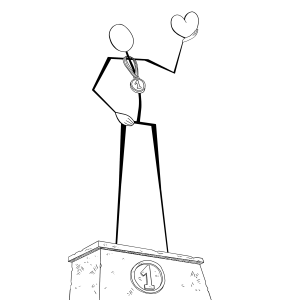
Resilience is built on your ability to see yourself clearly—both your positive and negative qualities—and believe yourself to be a good and likable person. Resilience requires you to believe that you deserve to feel better and to recover from you disappointment and set-back.
Self-Actualization:
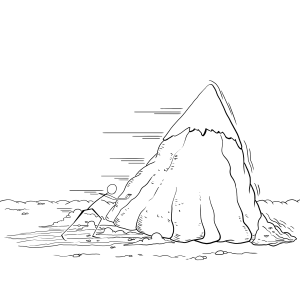 Arguably the most important EQ element of all (regarding resilience and so many other important qualities) Self-Actualization is an engine forward that sets goals and drives toward their completion. Moving forward, growing, changing and getting better–the energy and will to do all of these things are your Self-Actualization.
Arguably the most important EQ element of all (regarding resilience and so many other important qualities) Self-Actualization is an engine forward that sets goals and drives toward their completion. Moving forward, growing, changing and getting better–the energy and will to do all of these things are your Self-Actualization.
Optimism:
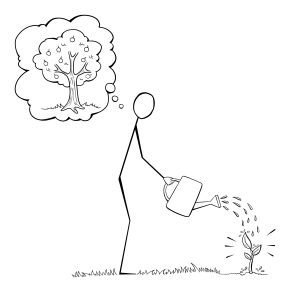 Of course, your ability to hope and to see the future as a place of promise is the very fuel of resilience. You hang in there because it could work out and have a happy ending.
Of course, your ability to hope and to see the future as a place of promise is the very fuel of resilience. You hang in there because it could work out and have a happy ending.
Resilience is a tough EQ challenge: three of the seven above EQ elements (Self-Regard, Self-Actualization and Optimism) also happen to be the three hardest elements to develop.
What’s more, these three challenging elements also correlate highly to one another. My ability to set and strive towards goals (Self-Actualization) is dependent on my ability to see the future as a positive place (Optimism)—otherwise, why bother with the goal? And I will not expend much effort at all on goal completion if I don’t believe myself to be worth the effort (Self-Regard).
These three EQ elements comprise the critical core of the EQ-i—foundational to the model, highly inter-related and dependent upon each other. They are essential to resilience and very challenging to teach or develop. However, no one can show resilience without them.

OKA offers a number of tools that focus on both the measurement and effective engagement of resilience.
 EQ-i
EQ-i
As detailed in this blog, the EQ-i is the world’s leading Emotional Intelligence tool, and OKA is one of the world’s leading trainers of this powerful resilience assessments. Click here to learn more about OKA’s EQ-i training and support tools.
HRG
The Hardiness Readiness Gauge (HRG) is a recently revised tool rooted in extensive research. Commitment, Control and Challenge–how engaged are you with these three critical pillars of resilience? To learn more about the HRG, click here.
 Pearman Personality Integrator
Pearman Personality Integrator
The Pearman is known first and foremost as a Type tool–to support (and even rival) the MBTI assessment, but one of the stand-out features of this innovative development tool is the FlexIndex, a compelling and drivingly practical approach to resilience and agility. To get more information on the Pearman, click here.


Love this, Hile! POWERFUL and beautifully written as only you could do!
Thank you 😊
Love this, Hile! POWERFUL and beautifully written as only you could do!
Thank you 😊